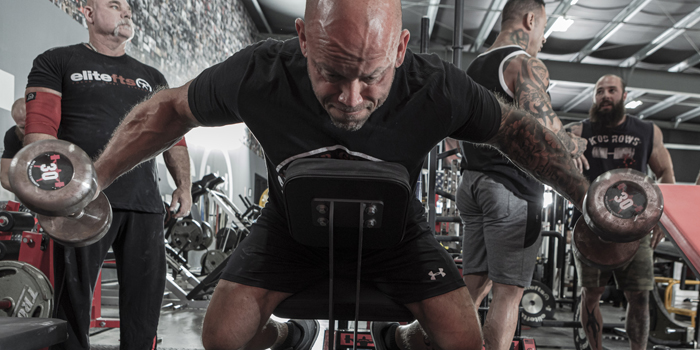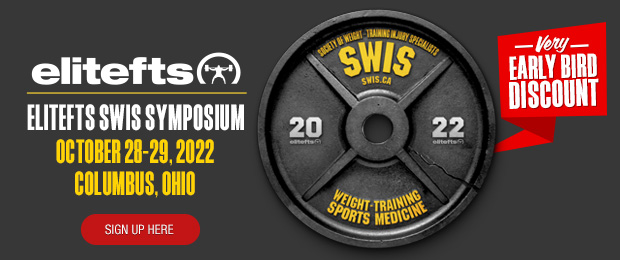
A few years ago, I wrote about the nines and tens of training. The concept goes like this: To be as strong as possible, you want to focus on those exercises that give you the best results. If you can't rank that exercise as a nine or ten, it becomes a one. Skip anything that is not a nine or ten outside of off-season training.
There is no doubt that to make progress as fast as possible, you need the exercises with the most carryover in your plan.
But...
After years and years of hammering away at those exercises, what if you are just tired of them?
What if they hurt?
What if you don't need that exercise because you are no longer competing?
It's in these instances where the sixes and sevens come into play.
So how do we take an exercise that is not as effective and make it just as worthwhile?
Let me explain.
1+1= 9 (Bad Math)
My previous article explains that anything that is not a nine or ten is a one. So it would help if you instituted bad math. For example: Band leg curls by themself might be a one for you, and band good mornings by themselves might also be a one. But those two can add up to nine when done back to back with intent. They definitely don't replace a glute-ham raise against bands. If you don't have a glute-ham, can't do them for one reason or another, or need to cycle it out, this bad math can allow two seemingly easier exercises to add up to much more than their individual parts. There must be intent on executing these exercises to get what you need out of them
Intent
We know that certain exercises, when improved, correlate directly to improvement in our main exercise. Others won't have nearly the carryover. When you perform an exercise with intent, you can get nearly the same effectiveness as one single nine or ten. It may require more concentration, sets, reps, and more exercises, but you can still get the work done. Going through the motions will not cut it. The squeeze, flex, pause, hold, or tempo needs intent.
Less Pain
I barely remember what it's like not to have a daily ache, pain, or a swollen joint. When I go to the gym, I know what hurts and what doesn't. Many days an audible needs to be called to keep my body in one piece. As the training years add up, finding exercises that don't hurt is very important. When it doesn't hurt, and you feel good, that six or seven is given way more than a painful ten. Trying to survive an exercise with minimal pain is different from being able to dig deep and focus on the work.
Having an injury or a painful joint might mean working around certain exercises. In the case of a bad knee where squatting and deadlifting is out, a triset of accessories could be used as a replacement. Sissy squats, pull-throughs, and band leg curls might be the only way to get in the work needed. You might never be able to accomplish the same as 60% bar weight and 25% band tension for 12 sets on dynamic effort squat. But you can still work hard, add muscle, and have fun. You may not get as strong as you could, but you can still train.
Have Fun
Training is supposed to be fun. Taking exercises, not in the normal rotation and blasting away can be fun. Chasing a pump, doing a set for a song, timed sets, or even back and forth sets vs. your training partner can make you push that set even further. Putting in the effort toward that less effective exercise might improve the rest of the workout, making it worth more than the initial six or seven. Progress and records are fun, but you need to circle back to what initially hooked you. It was training. Make training fun again.
Off-Season
The off-season is the other place to experiment with sixes and sevens. Using different angles, tempos, combinations, bars, and rep schemes will allow you to cycle through your bread and butter exercises to give them a rest. You may also find something else that moves your main exercise. It might add some needed muscle mass, reduce pain, or helps improve your technique due to a slight weakness. Play around with these second-tier exercises to move forward faster when the nines and tens phase back into training.
Are There 8s?
What about the eights, you ask? Eights are those exercises that still hurt but don't give you results of nines and tens. Fewer results and just as much pain is a no from me. It might be on occasion that it gets tossed into the mix if you feel great, but no need to cause more damage if you have other tools at your disposal. Stick with exercises that allow for less damage that you can give your all.
Nutrition
The nines and tens article discusses cheat meals and food quality. It is hard to argue against what I said in that article. Eat the highest quality foods. If they are not top quality, then try to eliminate them.
In today's economic climate, you might need to make some changes; chicken thighs instead of the breast, or chicken and oats instead of steak and rice. In this case, you can still get high-quality food, but it is not at the top of your grocery list due to the high prices.
Food that would normally be a six or seven on your preference list might have to be prepared in a way that makes it a nine or ten. For example, I'm not a seafood person. But if prepared right, I don't mind salmon, some sushi, or high-grade tuna steaks. I would much rather have a steak, chicken, or even pork. I don't want to eat salmon as it is a six for me, but I will make it work if the quality is still high.
Some rules I can break, but consuming higher-quality food is not one of them. If you can afford organic or grass-fed, then do it. If you can't, get the best you can. It might not be your first choice but find a way to make it work. Have fun with your nutrition, just like your training.
Matt Ladewski has been involved in the sport of powerlifting for over 20 years. As his pursuit of bigger numbers of his own has concluded, his attention has shifted to coaching his athletes, including a WPF and an AWPC champion. As a columnist for elitefts, Matt shares his training knowledge and experience as he writes about both his own training and the coaching of his athletes. Matt's best competition lifts include an 835-pound squat, a 550-pound bench press, and an 800-pound deadlift.










